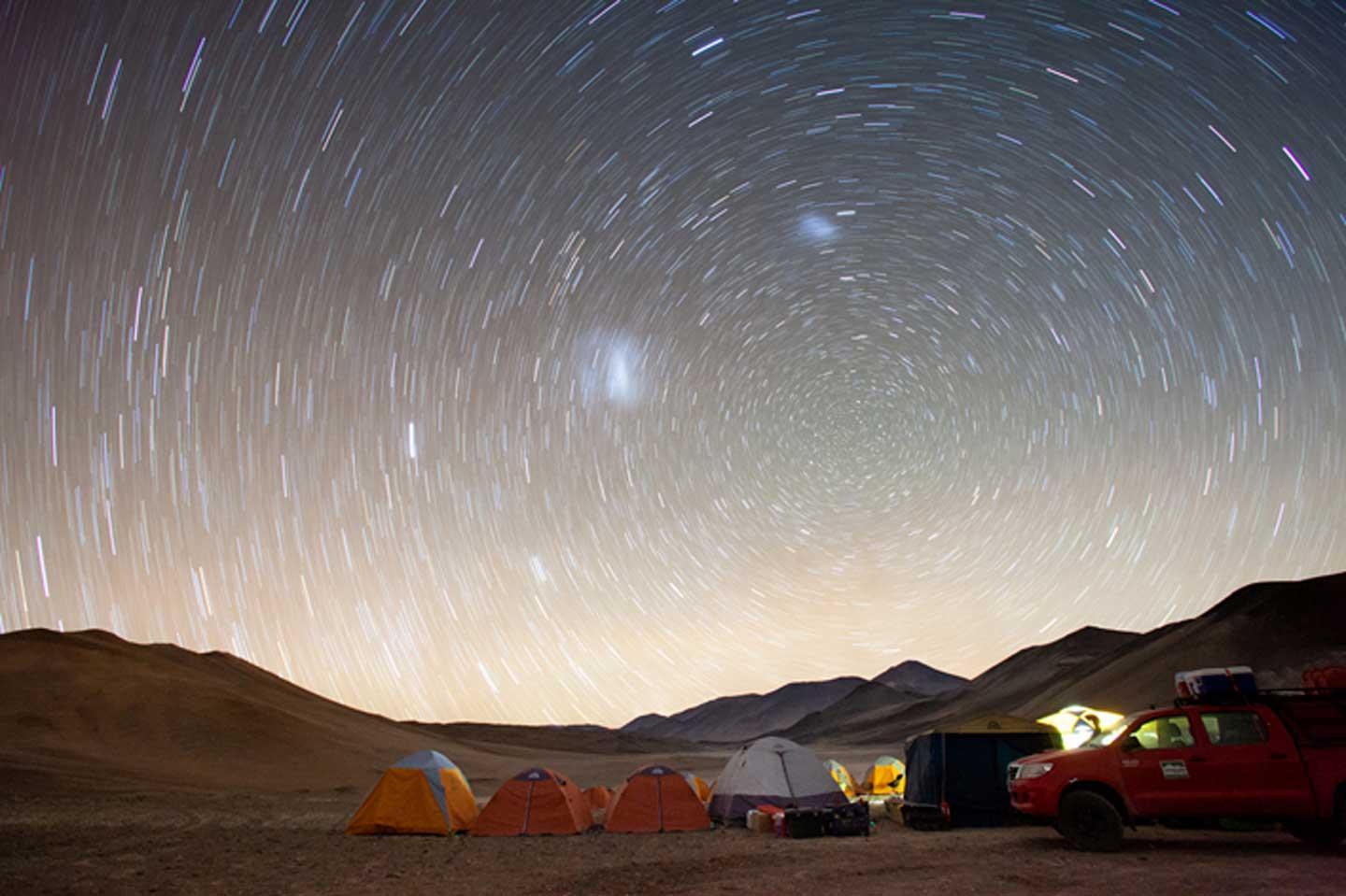
Our camp at night. Right in the center of the star trail, the two Magellanic Clouds give visions of alien worlds. Credit photo: Victor Robles, Campoalto and the SETI Institute NAI Team.
What can Earth teach us about the possibility of current or past life on Mars and how to find it? The SETI Institute’s multidisciplinary team of researchers traveled to remote areas of Chile to learn about life and habitability in extreme environments with the goal of applying that knowledge to the search for life beyond Earth.
The expeditions were supported by the NASA Astrobiology Institute to help prepare missions such as Mars 2020 and ExoMars in their search for biosignatures. The team examined microbial habitats in arid locations, at high altitude and in extremely elevated levels of ultraviolet radiation. By identifying patterns of habitability and life habitats that are repeatable at various scales, they hope to develop and train detection algorithms for AI technologies. Understanding what geological, mineralogical, and physicochemical conditions are required for microhabitats and life is only half the question. The team also looked to learn how life impacts and transforms the environment around it, which could provide additional clues for exploring other planets. Additionally, new instruments, tools, and methods to advance the search of life beyond Earth were tested.
- https://www.seti.org/forever-soaring-over-andes
- https://www.seti.org/how-do-we-know-how-search-life-mars
- https://www.seti.org/nathalie-cabrol-and-nai-team-return-field-expedition-chile
- https://www.seti.org/update-seti-institute-nai-team-2018-expedition-andes
- https://www.seti.org/seti-institute-nai-team-2018-expedition-andes
